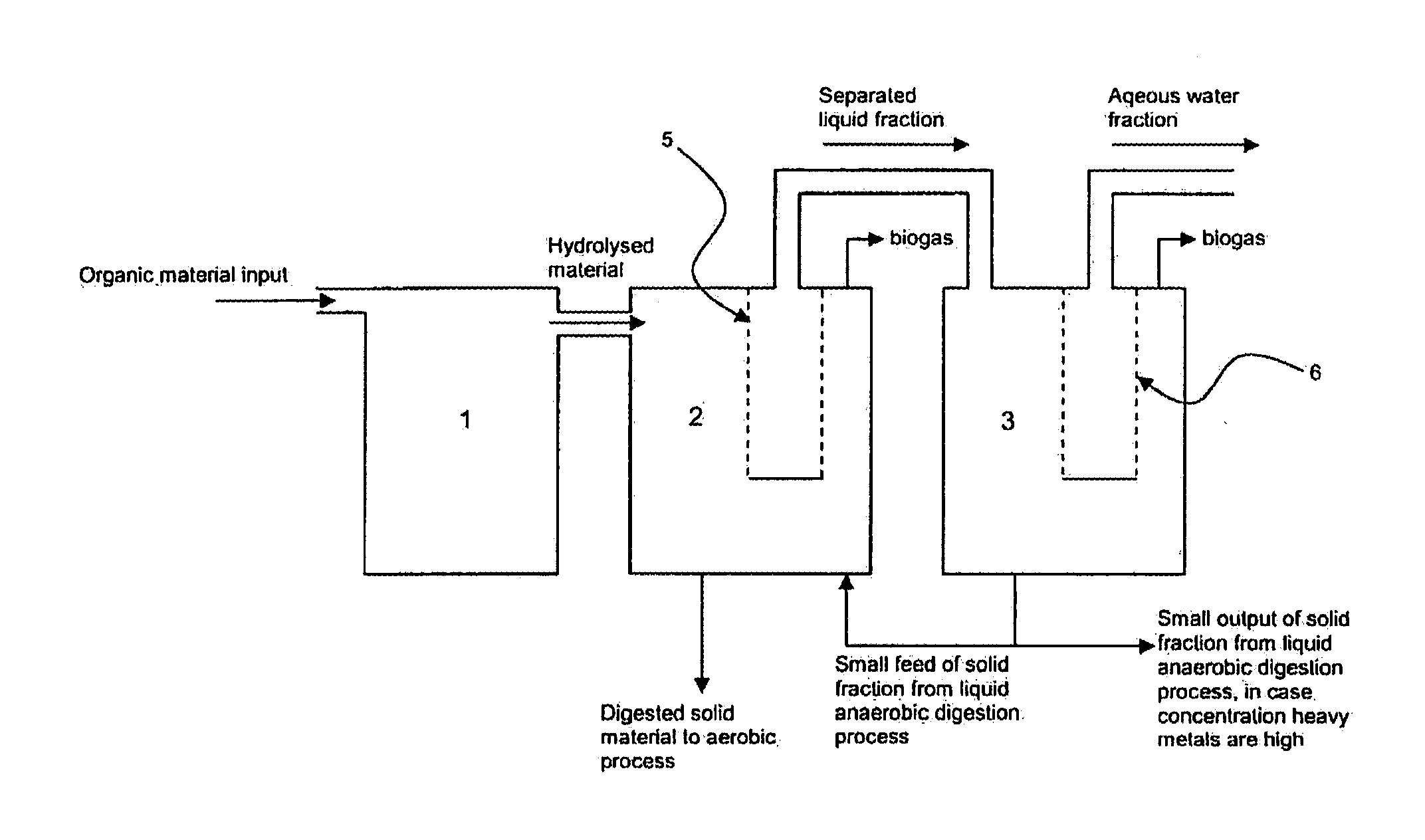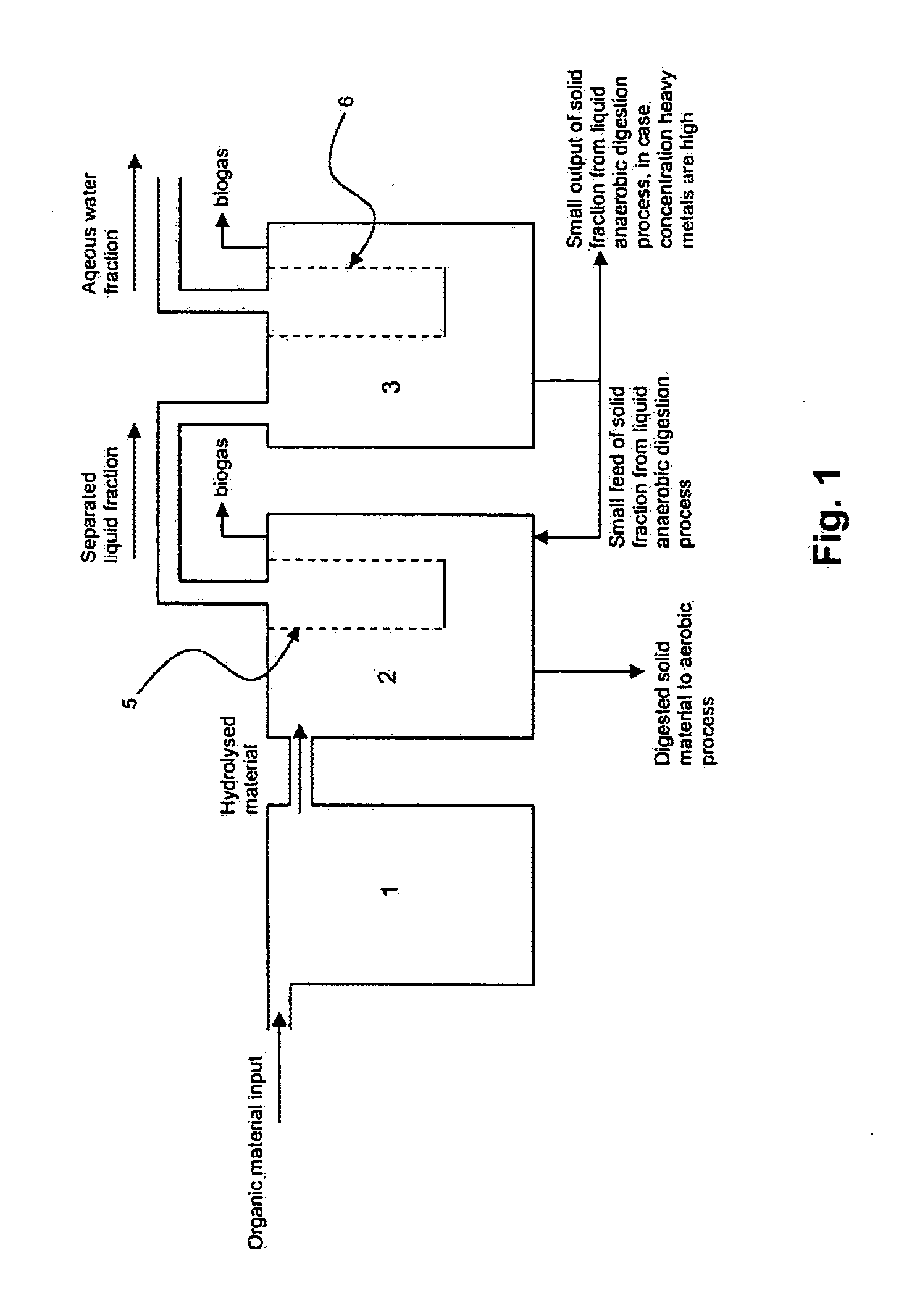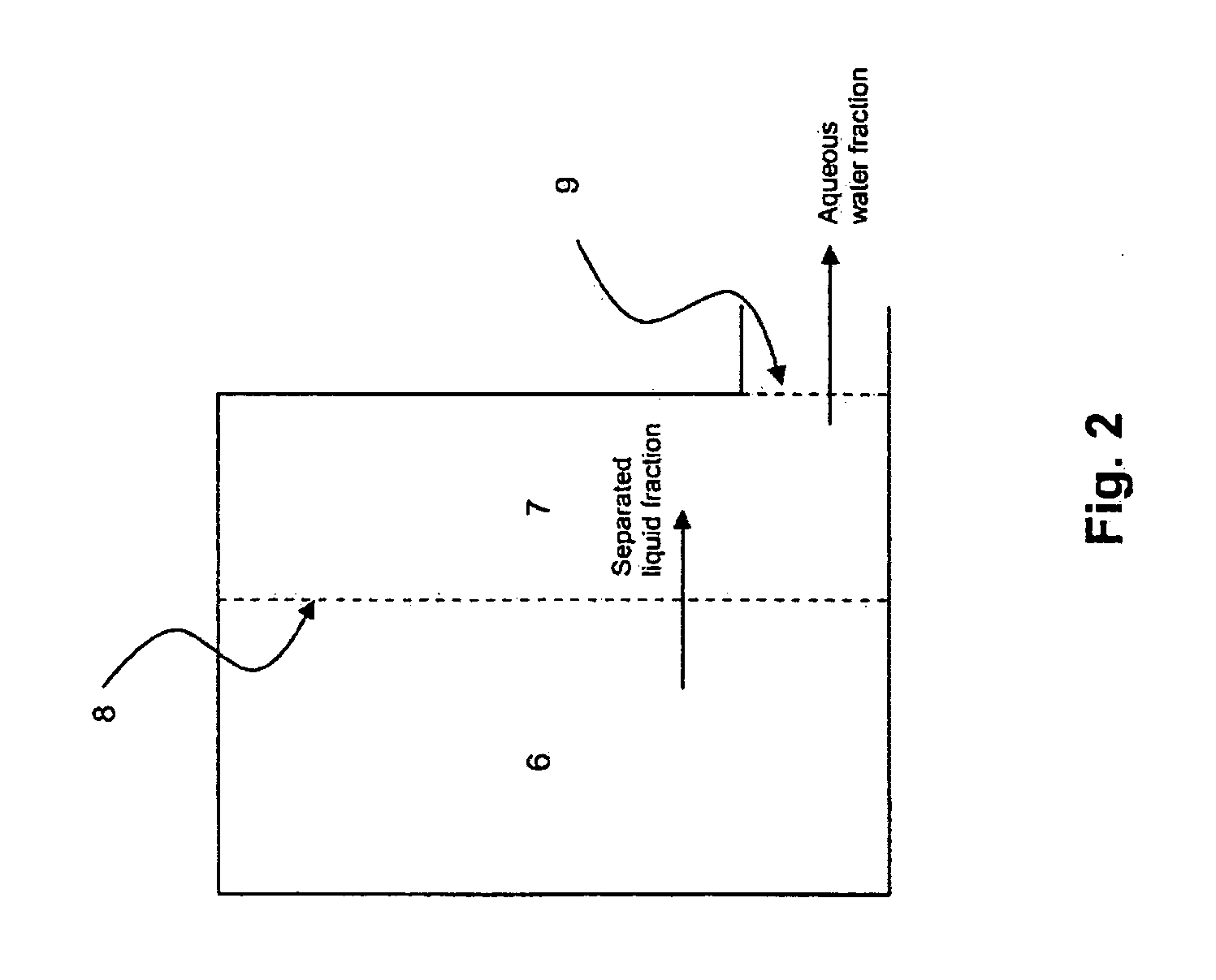Device and method for the anaerobic digestion of organic material to biogas by means of micro-organisms
- Summary
- Abstract
- Description
- Claims
- Application Information
AI Technical Summary
Benefits of technology
Problems solved by technology
Method used
Image
Examples
Embodiment Construction
[0020]The following is a description of certain embodiments of the invention, given by way of example only and with reference to the drawings. Referring now to FIG. 1, a first reactor is shown. In reactor 1, a first stage of the anaerobic digestion process is carried out, i.e. hydrolysis. The acidity in the reactor 1 is preferably at a pH-value ranging from 3 to 5, and most preferably about 4. To enhance the hydrolysis process, the surface area of the mass of organic material is preferably enlarged by decreasing the particle size. Preferably the mass of organic material is thereto led to a macerator (not shown) before entering reactor 1. In hydrolysis reactor 1, large molecules of the organic material, such as proteins, carbohydrates, and fats are converted into smaller molecules, such as acids, that are soluble or form an emulsion (the liquid fraction) and are therefore separable from a solid fraction. The hydrolyzed mixture of liquid emulsion and solid fraction is then transported...
PUM
 Login to View More
Login to View More Abstract
Description
Claims
Application Information
 Login to View More
Login to View More - R&D
- Intellectual Property
- Life Sciences
- Materials
- Tech Scout
- Unparalleled Data Quality
- Higher Quality Content
- 60% Fewer Hallucinations
Browse by: Latest US Patents, China's latest patents, Technical Efficacy Thesaurus, Application Domain, Technology Topic, Popular Technical Reports.
© 2025 PatSnap. All rights reserved.Legal|Privacy policy|Modern Slavery Act Transparency Statement|Sitemap|About US| Contact US: help@patsnap.com



